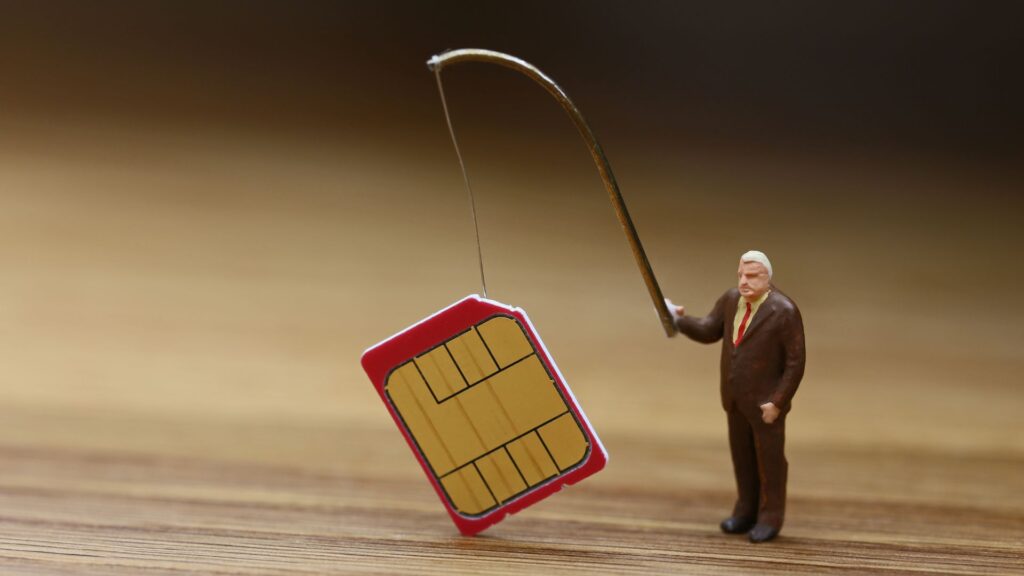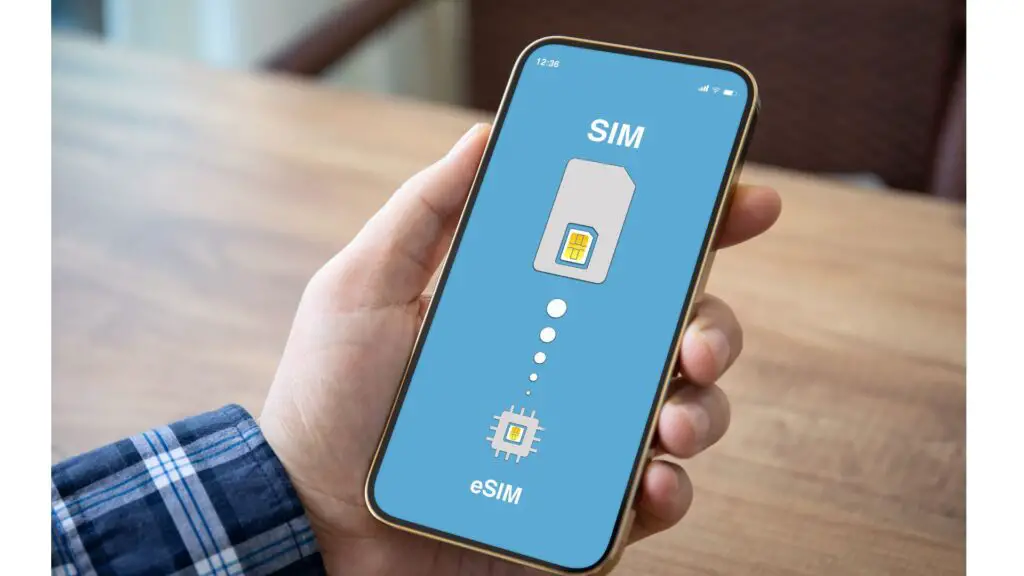Losing your SIM card can throw your life into a mini-crisis. You're not just missing a piece of plastic; you've potentially lost control of your phone number and your ability to communicate. Don't fret—this survival guide will help you through this situation. First off, is it possible to get a new SIM card with the same number?
Mobile phone subscribers can get a new SIM card and keep the same number. The telephone number is associated with a replaceable Subscriber Identification Module. Mobile service providers use SIM chips to identify a phone on their network. Several situations warrant issuing a new SIM card, and the process is fairly common.
So, let's dive into the immediate steps you need to take to regain control of your phone number and mobile account.

Immediate Steps to Take After Realizing Your SIM Card Is Lost
First thing's first, call your mobile carrier immediately using another device to report the lost SIM chip. But, why?
I've written many times about why passwords are a horribly insecure and that multifactor authentication (MFA) is critical in today's era of continuous data breaches. Well, many companies (yes, even banks) slap together security and use text messages or a phone calls as a way to deliver this second layer of security.
Your SIM card is the key to receiving a two-factor authentication (2FA) code for accessing these sensitive accounts.
By informing your carrier, they can temporarily suspend services or even deactivate the SIM, which will prevent unauthorized use of your number. This step not only safeguards your online accounts, but also protects you from racking up charges made by someone else using your SIM card.
Another step to consider, is to inform your contacts about the situation.
Scammers often exploit a lost SIM card to impersonate a victim and send misleading messages to your contacts asking for money or sensitive information. By giving your friends and family a heads-up, you make them less susceptible to falling for such scams. Use alternative means to contact your family, friends, and coworkers; a laptop and social media or email are viable options. This isn't just courteous; it's a proactive security measure.
So, now what? You might be wondering: can I get a new SIM card with the same number? Let's dive into how you can do just that.
Can You Get a New SIM Card With the Same Number? Here's How
Good news: Most carriers allow you to retain the same phone number when you get a replacement SIM card.
That's a relief, right?
The process generally involves contacting your carrier's customer support and explaining the situation. They'll guide you through the steps to deactivate your lost SIM card, ensuring it can't be misused, and help you activate a new one.
Now, it's not all rainbows and unicorns; you might have to cough up a little cash for this. There may be a fee involved for the replacement SIM card and the services involved in the switchover. The fees can vary from carrier to carrier, so it's a good idea to ask about costs during your call with the customer service representative.
Some carriers might offer the replacement for free if you're on certain plans or if it's your first time losing the SIM.
Lastly, security is a big concern these days, and you can't just ask for a new SIM card tied to your same phone number and expect them to hand it over.
Be sure to know some specifics of your account and be prepared that documentation might be required to prove your identity. This is to ensure that no one else is trying to gain unauthorized access to your number.
But what exactly was stored on that lost little piece of plastic, and does a SIM card inherently come with a phone number?

Do SIM Cards Come With Phone Numbers? Understanding What You've Lost
First things first, SIM cards are generally directly linked to your phone number. That little chip holds your unique International Mobile Subscriber Identity (IMSI), and it's what connects you to a specific mobile network. Once activated, the network assigns a phone number to that SIM, making the two virtually inseparable as long as the SIM is in use.
Why is this important to know, especially if you've lost your SIM card?
Anyone who finds your SIM card and inserts it into a compatible phone could potentially receive calls and texts meant for you. This access includes the aforementioned two-factor authentication (2FA) codes.
Note: Long gone are the days when contacts are stored on the SIM card. Most dumb phones, feature phones, flip phones, etc. store the contact data on the device's memory.
As I outlined in above, one of your immediate steps should be to contact your service provider. They can deactivate the lost SIM, unlinking it from your IMSI. They can then guide you through the process of obtaining and activating/relinking a new SIM card to your existing account and phone number, ensuring you can keep the same number you've always had.
Wondering how to find out which phone number was associated with your lost SIM card? Read on to solve this often overlooked but crucial puzzle.
How to Check Your Lost SIM Card's Phone Number
Remember that your SIM (Subscriber Identity Module) chip doesn't store your phone number…just an IMSI (International Mobile Subscriber Identity) and other network-related data to authenticate your device on a mobile network.
Your carrier is the one that associates this IMSI with your phone number and other account details. Therefore, if someone finds your lost SIM, they won't instantly know your phone number.
To gain that information, they would have to navigate through layers of security and authentication measures set up by the mobile company. This is why choosing a carrier with robust security protocols is critical.
For instance, when T-Mobile acquired Mint Mobile, I took the opportunity to port my kids' phone numbers away. T-Mobile's acquisition of Mint and Ultra Mobile raised some eyebrows because T-Mobile hasn't had the best track record with security.
In the same year as the acquisition, they suffered another data breach.
So, if you've lost your SIM and are worried about your phone number's safety, immediately contact your carrier to report the loss and deactivate the SIM. You can usually find the carrier's contact details on their website or in any paperwork related to your mobile plan. The carrier can provide a replacement SIM that you can insert into your phone, and your original number will be restored.
Act fast to minimize the risk of unauthorized access.
Ready to make your life easier and reduce the chances of facing the same SIM drama? Let's dive into the world of eSIMs and how they can prevent future headaches.

Using eSIMs to Prevent Future Lost SIM Issues
One of the most practical ways to avoid the headache of losing a physical SIM card is to switch to using an eSIM. Unlike traditional SIM cards that are tangible and can be lost or damaged, an eSIM is embedded (soldered) directly into your smartphone. This effectively eliminates the risk of losing your SIM card in the first place.
Activating and Using an eSIM
Activating an eSIM is a straightforward process, but varies depending on your carrier and phone model.
Typically, you'll need to navigate to your phone's settings and locate the cellular or network options. From there, you should find an option to add a cellular plan.
Most carriers provide a QR code that you scan using your phone's camera to activate the eSIM.
I wrote about how to convert from SIM to an eSIM.
Benefits of eSIM Over Traditional SIM
The beauty of eSIM technology is that it's not just about avoiding loss. It offers several advantages over its physical counterpart.
One of the most compelling benefits is the seamless transition between carriers. Since the eSIM is digital, you can switch carriers without having to swap out a physical card, which makes it incredibly convenient if you're traveling or if you like to hop between carriers to take advantage of promotions.
It's also way more secure. Traditional SIM cards can be removed and potentially used in another device. An eSIM is tied to your specific device.
Ever wonder what you can do with a smartphone without a SIM card? These devices are surprisingly useful. Check it out next.
Other Questions You Might Have
Can I track my lost SIM card to find its location?
SIM cards themselves do not have tracking capabilities. However, if the SIM card is inside a smartphone, you can use the device's built-in tracking services like "Find My Device" for Android or "Find My iPhone" for Apple to locate it.
Will all my saved text messages be available on my new SIM card?
Text messages are generally stored on the phone's internal memory and not on the SIM card. If you're getting a new phone, you'll need to directly transfer them or restore them from a backup. If you are replacing a SIM in the same device, your texts should still be available.
How long will it take for my new SIM card to get activated?
The activation time can vary between carriers, but it mainly takes anywhere from a few minutes to 24 hours. Contact your carrier for specific timeframes.
Is it possible to transfer my remaining balance to the new SIM card?
Most carriers automatically transfer remaining balances and prepaid credits to a new SIM card. You'll need to contact customer service to initiate the process.
Can I still use mobile data if my SIM card is lost or stolen?
Once you report the loss to your carrier and the SIM is deactivated, you won't be able to use any services, including mobile data, tied to that SIM card.
Is it possible for someone to clone my lost SIM card?
While technically feasible, SIM cloning is illegal and relatively difficult to accomplish without specialized equipment. Modern SIM cards come with enhanced security features that make cloning less likely.